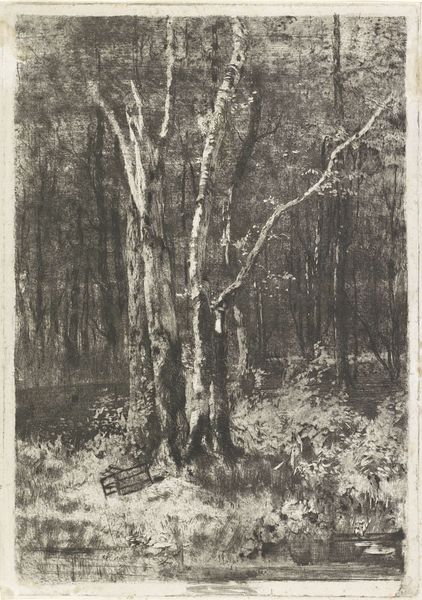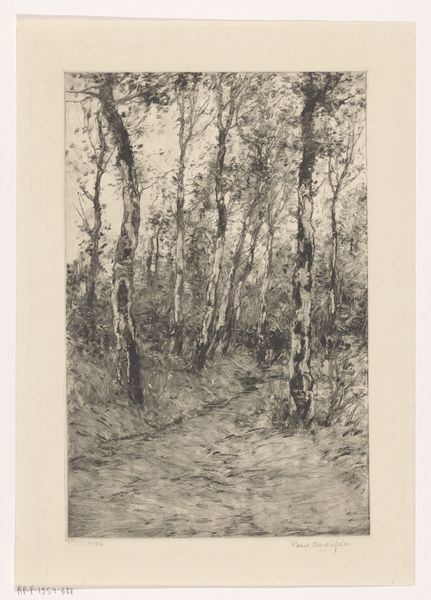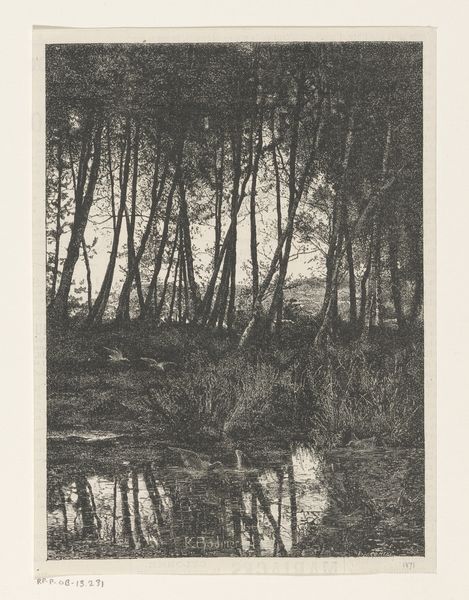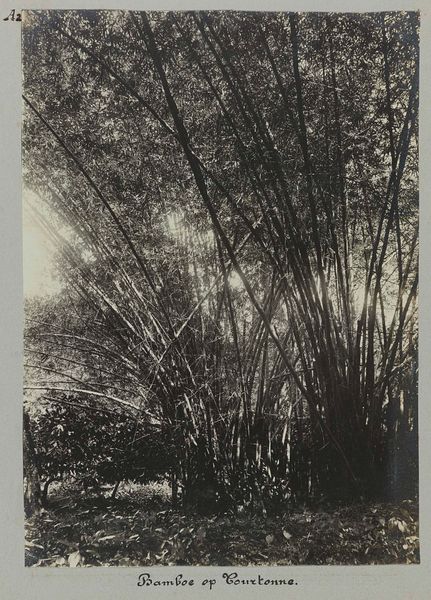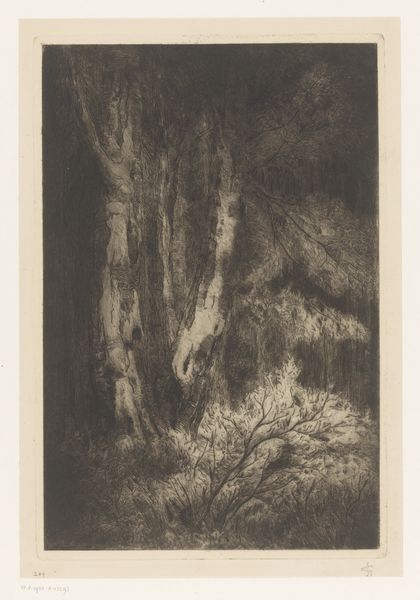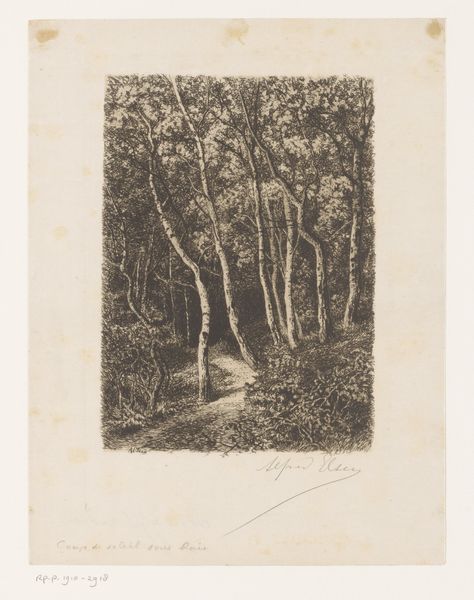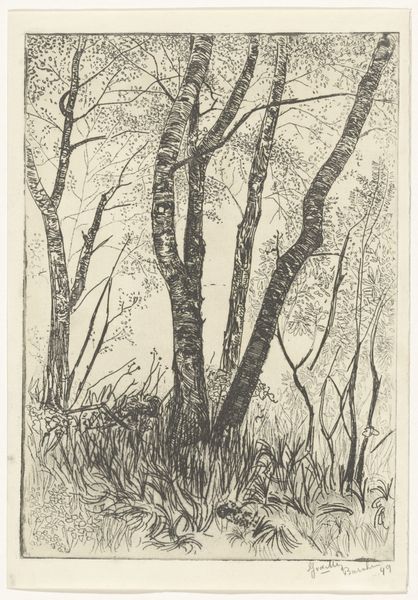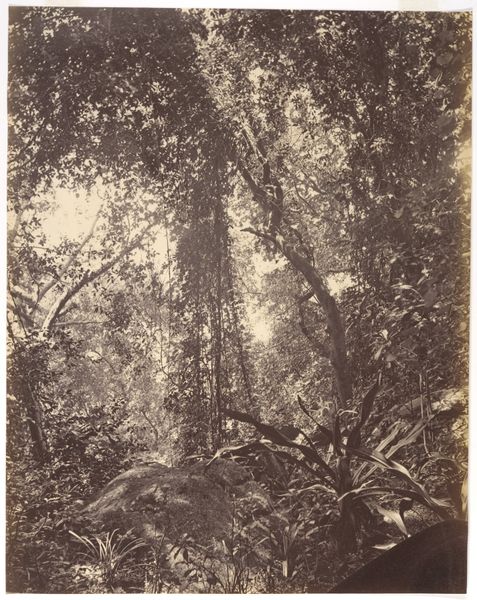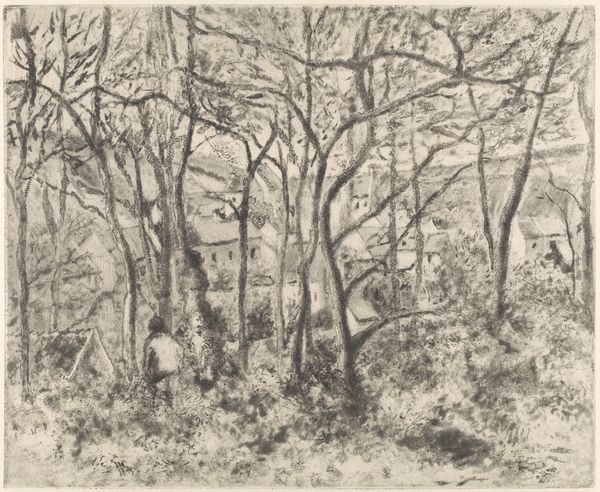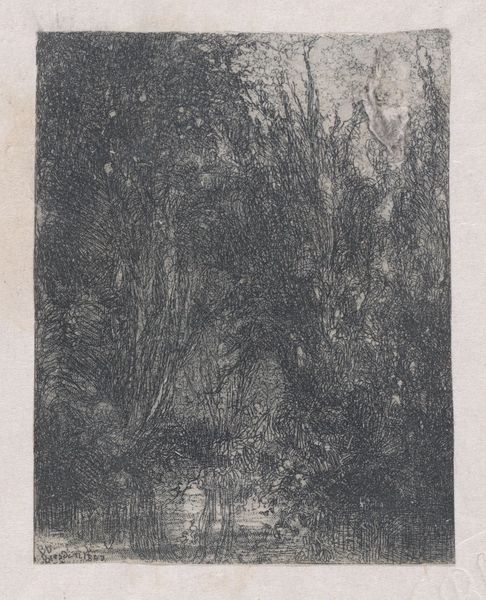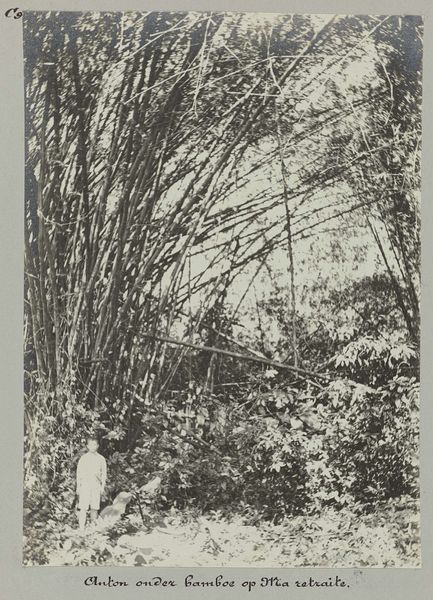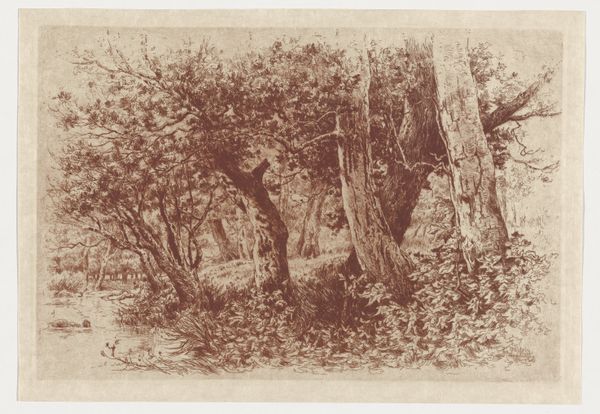
photography
#
landscape
#
nature
#
photography
#
orientalism
Dimensions: height 230 mm, width 170 mm
Copyright: Rijks Museum: Open Domain
Curator: This is an intriguing image titled "Jongen in een mangrovebos, voormalig Nederlands-Indië," or "Boy in a Mangrove Forest, Former Dutch Indies," attributed to Onnes Kurkdjian, dating roughly from 1890 to 1911. Editor: Immediately, I’m drawn to the compositional density. The tangled mangrove roots create an intricate network that dominates the foreground, almost swallowing the lone figure of the boy. The sepia tones amplify the feeling of a humid, claustrophobic space. Curator: Absolutely. Beyond its aesthetic impact, the photograph prompts a consideration of colonial narratives and representation. Here, the portrayal of the indigenous boy amidst this exotic landscape constructs a visual rhetoric common in Orientalist photography of the period. Editor: Focusing on the purely visual elements, notice how the artist plays with light and shadow. The subtle highlights on the boy’s skin create a focal point, amidst a space that appears more sculptural than it does as an environment. The boy serves as the fulcrum in a composition entirely dictated by diagonal, horizontal, and vertical lines. Curator: Precisely. His positioning is not accidental. Consider the power dynamics implicit in staging the boy in this way. It evokes the historical legacy of the Dutch colonial enterprise in what is now Indonesia, where such images contributed to a constructed image of the exotic other and the subjugated. How does the nature serve as a backdrop of control? Editor: I see that, yet I also want to highlight the almost abstract patterns formed by the interlacing roots. There's a strange visual harmony, almost a kind of beautiful geometry present that seems indifferent to the figure within it. The photograph then functions, from one point of view, as an exploration of form. Curator: Perhaps, but ignoring the context of colonialism is a form of intellectual elision, which fails to recognize that aesthetic forms themselves often serve specific ideological functions. The natural setting isn’t innocent; it participates in larger conversations of power and dispossession. Editor: Well, seeing as a study of these formal contrasts, even acknowledging how one may relate to the other, is of paramount interest to me, perhaps we can simply consider both lenses equally. Curator: A valuable, crucial push and pull. Thank you. Editor: Indeed.
Comments
No comments
Be the first to comment and join the conversation on the ultimate creative platform.

